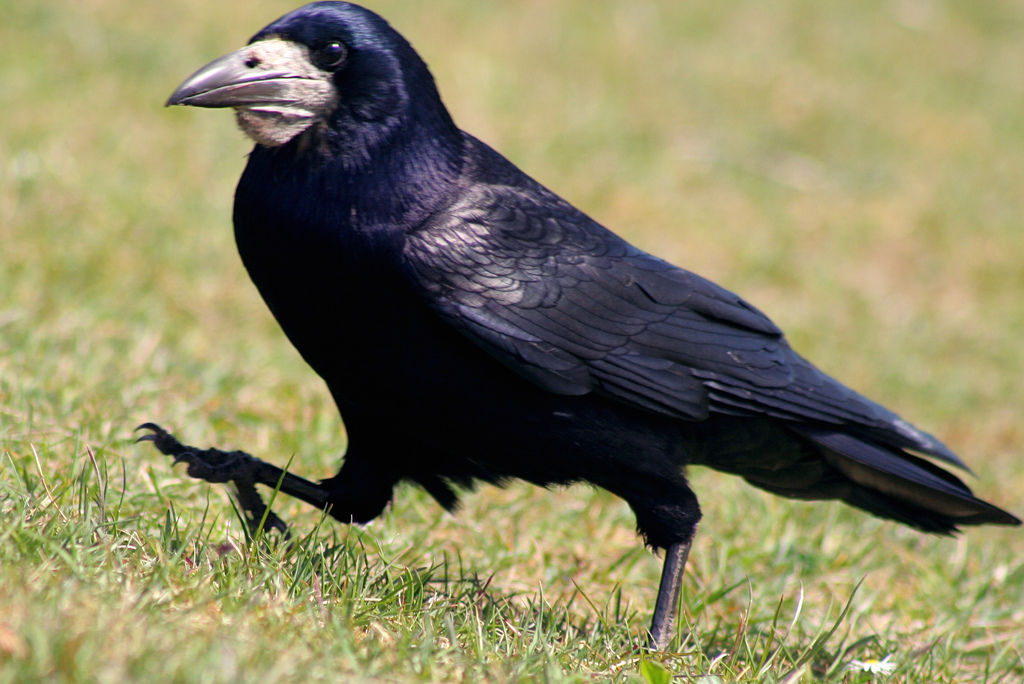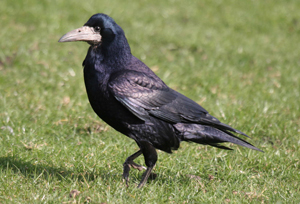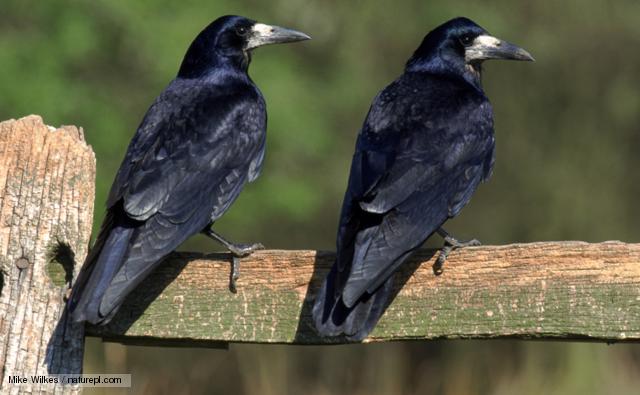
Corvus frugilegus
SUBFAMILY
Corvinae
TAXONOMY
Corvus frugilegus Linnaeus, 1758, Sweden. Two subspecies.
OTHER COMMON NAMES
French: Corbeau freux; German: Saatkrдhe; Spanish: Graja
Comъn.
PHYSICAL CHARACTERISTICS
18.33 in (47 cm); 11.8–18.58 oz (337–531 g). Entire plumage is
black and highly glossed with metallic blue, green, and purple.
Base of the bill, chin, and loral region are bare, giving the
forecrown a slightly peaked appearance. Bill is whitish at the
base shading to dusky over the terminal half. Legs and feet are
black.
DISTRIBUTION
In all but the most mountainous areas of Europe and Asia.
HABITAT
Farmland with scattered trees and wooded steppe.
BEHAVIOR
Significant fall migrant, flying by day from northern Europe
and Asia, to western Europe, the Middle East, and southern
Asia. In the Seine-et-Marne district of France, the breeding
population was estimated at 10,000; the winter population
500,000.
FEEDING ECOLOGY AND DIET
Soil feeder on invertebrates, seed, grain.
REPRODUCTIVE BIOLOGY
Nests colonially in rookeries; there are generally at least 20
nests densely clustered around the tops of several trees. Nests
used repeatedly in successive years. Lays two to seven eggs in
grass and leaf cup within bulky stick nest. Incubation 16–18
days; fledging 32–33 days.
CONSERVATION STATUS
Not threatened. Abundant to localized in Europe. Evidence of
decline in eastern Asia.
SIGNIFICANCE TO HUMANS
Often persecuted because of its tendency to feed on cereal
seed.
Photo Gallery of - Rook




 Animalia Life
Animalia Life